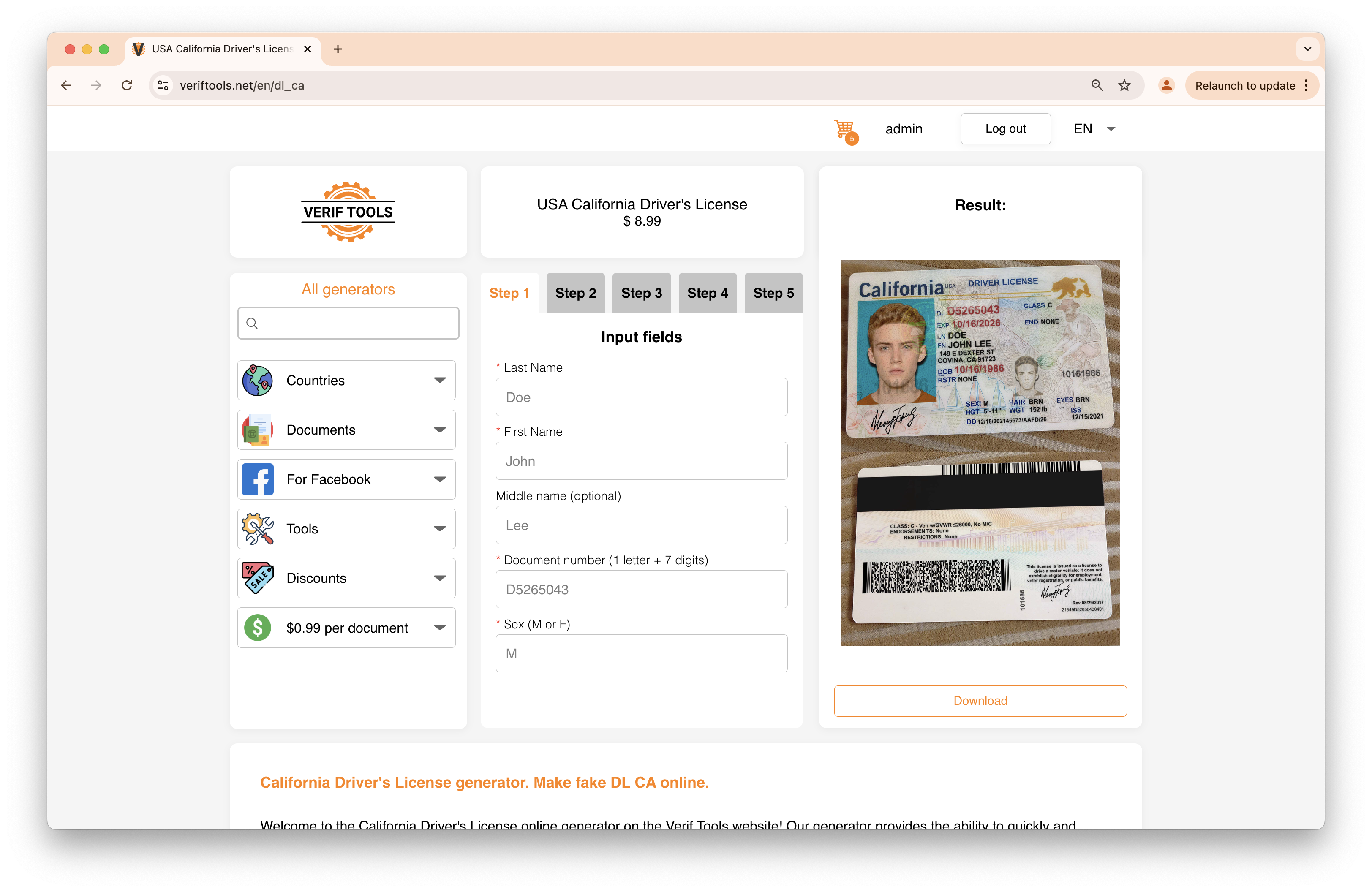AI OnlyFake fake ID documents bypass KYC verification
Allegedly, a website named "OnlyFake" and "VerifTools" is purportedly churning out highly authentic-looking fake IDs through the use of artificial intelligence, and these counterfeits appear to be effective.

According to a report by 404 Media, the publication conducted a test on the site and received almost instant results, obtaining a fake California driver's license. The article mentions that they were able to input specific details such as the desired name, biographical information, address, expiration date, and signature, thereby customizing the counterfeit. Additionally, users have the option to browse through OnlyFake's collection of images, which the site claims are not AI-generated, if they prefer not to use their own photograph for the fraudulent document.
Remarkably, the example provided by 404 Media depicted the fake ID placed against a carpet background, a feature reportedly required by some sites for verification purposes. OnlyFake also goes to the extent of modifying the metadata of its images, faking GPS coordinates to make it appear as if the images were captured by a smartphone, which enhances the credibility of the documents.
OnlyFake has reportedly shared additional examples of its fake ID images on the social media app Telegram, including driver's licenses from Arizona and passports from various countries such as the United States, Canada, Austria, and Switzerland, among others.
Furthermore, the publication conducted an actual test on one of the images generated by OnlyFake and successfully passed the identity verification process on the cryptocurrency exchange site OKX using a fake British passport.
According to 404 Media's report, OnlyFake claims to achieve the rapid and efficient creation of fake IDs by utilizing "neural networks" and "generators." The site boasts of producing up to 20,000 documents per day and suggests that "hundreds of documents can be generated at once using data from an Excel table." However, the publication was unable to verify whether AI generation was indeed employed.
Interestingly, 404 Media notes that the backgrounds of the images, such as the fabric or hard surface, appear to be genuine photographs rather than AI-generated images. Additionally, the report highlights that various IDs posted on OnlyFake's Telegram are depicted against real backgrounds, such as hard surfaces or blankets.
While these digital images may not be as practical as physical fake IDs, they still present numerous opportunities for online misuse, as demonstrated by 404 Media's test.